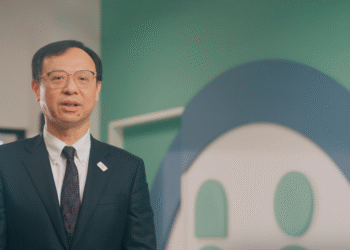PR professionals sit at the epicenter of AI transformation.
Meiko S. Patton is an AI communications specialist at the United States Postal Service and an advisor for Ragan’s Center for AI Strategy.
The landscape of public relations is shifting beneath our feet, and a groundbreaking Microsoft Research study has revealed just how profound this transformation will be. Based on analysis of 200,000 real-world AI conversations, the study provides the clearest picture yet of which professions face the greatest AI impact — and the findings should serve as both a wake-up call and a roadmap for PR professionals.
The numbers don’t lie: Language professionals lead AI impact
The corrected Microsoft study reveals that interpreters and translators rank No. 1 among individual occupations most likely to be impacted by AI, with an applicability score of 0.49. This finding isn’t just about translation services — it’s a clear signal that AI excels at language processing, cross-cultural communication and the very skills that form the backbone of public relations work.
Public relations specialists appear at No. 23 on the individual occupation rankings with a score of 0.36, representing 275,550 professionals nationwide. But this ranking tells only part of the story. When examining broader occupational categories, media and communication workers — the category that encompasses most PR work — ranks No. 1 among all occupational groups with a score of 0.39, affecting over 602,000 professionals.
What does this mean? PR professionals sit at the epicenter of AI transformation, working in the most AI-impacted occupational category while practicing skills that AI has proven exceptionally capable of performing.

Why PR work is particularly vulnerable
The study’s methodology reveals why PR professionals face such significant AI impact. The research identified that AI shows the strongest capability in three core areas that define modern public relations:
Information gathering and research: The study found that information gathering was among the most common user goals when interacting with AI, with high success rates. PR professionals spend considerable time researching media contacts, industry trends, competitor activities and background information for campaigns — all tasks where AI demonstrates exceptional capability.
Writing and content creation: With writers and authors ranking No. 5 in individual occupations (score 0.45), the writing-intensive nature of PR work becomes a clear vulnerability. Press releases, media pitches, social media content and crisis communications all fall within AI’s demonstrated strengths.
Communication and relationship management: The study shows AI excels at advisory and coaching roles — skills central to media relations, stakeholder communication and client counseling that define PR practice.
The opportunity within the challenge
However, this AI impact shouldn’t be viewed as a death sentence for PR careers. Instead, it represents the greatest professional evolution opportunity in decades. The study found a weak correlation between AI applicability and wages (r=0.07), suggesting that high AI impact doesn’t automatically translate to job displacement or reduced compensation.
Smart PR professionals are already identifying where AI can amplify their strategic value:
Strategic counsel over tactical execution: While AI can draft press releases and social media posts, it cannot understand nuanced stakeholder dynamics, navigate complex organizational politics or provide the strategic counsel that senior executives need during crisis situations.
Relationship building and trust: The human elements of PR — building authentic relationships with journalists, understanding cultural sensitivities and maintaining long-term stakeholder trust — remain distinctly human capabilities that AI cannot replicate.
Creative problem-solving: Complex PR challenges require creative thinking, ethical judgment and the ability to synthesize multiple perspectives — areas where human insight remains irreplaceable.
Concrete AI applications already transforming PR
Forward-thinking PR professionals are already integrating AI tools into their workflows:
-
Media monitoring and analysis: AI-powered platforms can track brand mentions across thousands of sources, analyze sentiment trends and identify emerging issues before they become crises.
-
Content personalization: AI helps create targeted messaging for different audience segments, personalizing pitches for individual journalists based on their coverage history and interests.
-
Crisis response: AI can help draft initial crisis communications, monitor social media sentiment in real time and suggest response strategies based on similar historical situations.
-
Performance analytics: Advanced AI analytics provide deeper insights into campaign effectiveness, media coverage quality and ROI measurement.
Your strategic response: Three essential steps
-
Embrace AI as your strategic partner: Start experimenting with AI tools for routine tasks like initial draft creation, research compilation and data analysis. This frees up time for higher-value strategic work.
-
Develop AI-resistant skills: Focus on capabilities that remain uniquely human — strategic thinking, ethical judgment, complex relationship management and creative problem-solving.
-
Lead the integration: Position yourself as the AI champion within your organization or agency. Understanding both AI capabilities and limitations makes you invaluable in guiding responsible AI adoption.
Your next step: Join the AI revolution
The PR profession is at a crossroads, and the professionals who thrive will be those who proactively engage with AI transformation rather than resist it. This is where the Ragan Center for AI Strategy becomes an invaluable resource for PR professionals ready to lead rather than follow.
The center represents a first-of-its-kind community specifically designed for communications professionals navigating the AI revolution. With advisors from influential brands like Cisco, FedEx, Mars and Merck, the center offers what every PR professional needs right now: real-world, real-time guidance from peers who are actively implementing AI strategies.
The center provides access to a council of trusted advisors, live peer learning opportunities, strategic tools and templates including AI policy frameworks and vendor evaluation scorecards, ongoing AI skills development with certificate programs, and a roadmap to responsible AI adoption with proprietary briefings and benchmark data.
As Diane Schwartz, CEO of Ragan Communications, notes: “AI is redefining how we work, tell stories and lead. The Center for AI Strategy gives communicators a trusted voice in the room, alongside peers who are equally committed to learning, testing, governing and advancing AI in a way that keeps humanity and strategy at the core.”
The time to act is now
The Microsoft study makes one thing crystal clear: AI transformation in PR isn’t coming — it’s here. The question isn’t whether AI will impact your career, but whether you’ll be among the professionals who harness its power to elevate your strategic value or among those who get left behind.
The most successful PR professionals of the next decade will be those who view AI not as a threat to their expertise, but as a powerful amplifier of their strategic capabilities. They’ll be the ones who understand that while AI can handle the tactical execution, human insight, creativity and relationship-building skills become more valuable than ever.
Your career evolution starts with a single decision: Will you lead the AI revolution in PR, or will you let it happen to you? The choice — and the opportunity — is yours.
This article is a preview of content available to members of Ragan’s Center for AI Strategy.
The post The AI revolution in public relations: What Microsoft’s latest study means for PR professionals appeared first on PR Daily.














